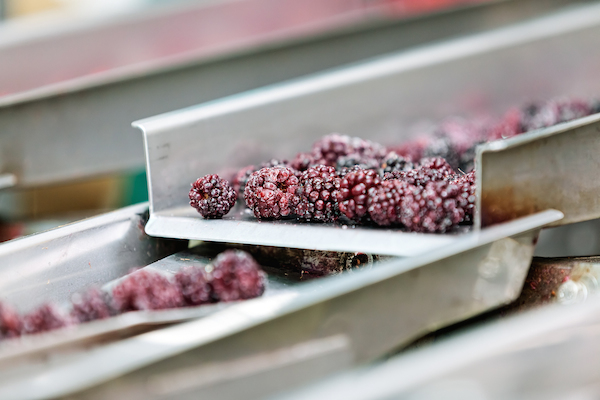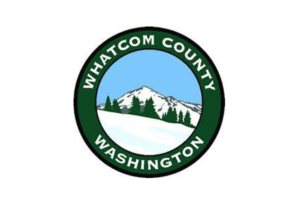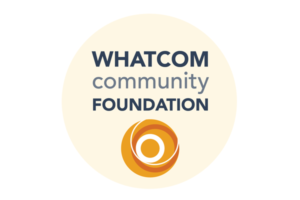More and more, food hubs are wondering if they should build frozen processing capabilities. At first review, it seems like a solution to so many challenges in the local food system.
Growers struggle when their key crops are ready for sale at the same time as other growers in their region – flooding the market and lowering prices. They may also find themselves with a surplus and no sales channels. The ability to process and freeze these crops for sale throughout the year would address these issues. Buyers, particularly restaurants and institutions, are seeking significant quantities of locally sourced ingredients to meet local purchasing commitments and/or their consumers’ demands. While this may be easy to achieve during the summer months, many buyers struggle to source local once harvest season comes to a close. Additionally, institutions in particular often prefer to purchase processed produce, because their staff may not have the time or skills to utilize whole produce or because processed is more cost effective. By investing in frozen processing capabilities, food hubs could address the challenges faced by both growers and buyers, while also diversifying their product base with higher margin items that bring in revenue even during the off season.
Sounds like a perfect solution, right?
The flip side is that developing a frozen local processing line can be costly, and it can be extremely complex to determine the right business model for it. In several of our studies, we’ve worked with local teams to explore if and how they should incorporate frozen processing into their food hub model.
In Part I of this series, we share some initial perspectives we’ve gained from these studies on the economic and operational considerations that should be assessed when exploring a potential frozen processing business line. We are thrilled to be moderating “The Economics of Small Scale Processing” at the 2016 National Food Hub Conference, where we’ll be joined by three food hub operators whose businesses incorporate frozen local, who will share their firsthand wisdom and guidance. In Part II of this series, we will report back on what we learn during our panel.
What to Decide: Business Model Components
As you begin to explore the possibility of frozen local, you’ll want to think through key components of your business model. In our research, we’ve found that there are several key decisions that need to be made:
- Buy/sell versus co-packing: How will you generate revenue? Will you purchase raw products, freeze them and sell them under your own brand, or will you contract freeze products for farmers and other business owners for a fee? Or will you do both?
- Product set and pricing: Which products will you freeze? Vegetables, fruit, meat, seafood, prepared products? How will you set pricing? What will you pay suppliers? What margins do you anticipate?
- Pre-freezing processing: Before products are frozen, they have to be washed, cut, and often blanched or pre-cooked. How will you manage these processes? Through highly mechanized lines that require large investments in equipment? Or with a larger production staff to process products manually?
- Cryogenic versus blast freezing: How will you freeze your products? Will you use a more efficient cryogenic machine that individually quick freezes product in minutes by coating it with liquid nitrogen or carbon dioxide? Or will you spread out your product on sheet trays and load it into a blast freezer that takes a few hours to get your product to an individually quick frozen state? How will you balance quality and efficiency against higher operating costs associated with cryogenic gas? And can your facility source cryogenic gas or does your building location and/or layout make it unfeasible?
- Standalone versus partnership: Will you manage all components of the frozen processing line in-house or will you work with one or more partners on anything from pre-freezing processing to branding to logistics?
How to Decide: Key Considerations
Making the right decision on your business model should be driven by economic considerations and your organizational context, operational reality, and local landscape.
Clarify your goals and organizational context: Why are you considering frozen local? Some operators are looking to better support their local growers, while others are looking to meet the needs of K-12 schools. Some are seeking new strategies to improve the profitability of their existing food hub or enterprise, while others are interested in establishing a program that supports job creation and workforce development. Once you’ve defined your goals, consider the existing assets you have in place today. Do you already have any fresh processing equipment, a commercial kitchen, frozen storage space or trucks? Are there any partnerships in place that can be leveraged? Clarification of your goals and foundational assets will ensure strategic alignment of your business model with your organizational context.
For example, if your goals include job creation and workforce development, you may be more likely to adopt a manual, labor-intensive strategy for pre-freezing processing instead of investing in equipment for a mechanized pre-freezing processing line. You may also find a more manual batch blast freezing process to be appealing over the more automated cryogenic freezing approach.
If you are looking to support local produce growers while improving the profitability of your food hub, you might be more likely to utilize blast freezing versus cryogenic. Between the significant cost of liquid nitrogen required for cryogenic freezing and the fair prices you would want to pay growers for their products (that are significantly higher than the prices large companies such as Birds Eye pay their contract growers), you might not have enough margin left per pound to ensure profitability. If you do pursue cryogenic, you might then include meat and seafood as part of your product line to make it financially viable, as this product set commands higher prices and margins than produce, and will allow you to generate revenue year round.
Evaluate the needs of your buyers: Determine who you want to be sell to – restaurants, grocery stores, institutions, prepared food companies, etc. What products are they looking for? How much are they willing and able to pay? What quality and consistency levels do they expect? How much do they anticipate buying?
For example, if your target buyers require products at the highest quality and consistency levels, you might invest in a mechanized automated pre-freezing processing system that leads to individual products being highly uniform. You may also be more likely to invest in cryogenic versus batch blast freezing. Before going that route, you’ll want to make sure the economics work out – that the buyers are willing to pay enough per pound to cover the difference in your production cost per pound with the utilization of cryogenic gas.
Assess agricultural production in your sourcing radius: What products are grown in your region? How many interested growers can you identify? How much volume they produce? When will products be ready for processing throughout the year? Do these growers already have buyers for their frozen produce and want to pay you to freeze it for them? Or do they want to sell you their fresh produce and you’ll need to find a buyer? Can these growers commit to selling you product as part of preseason crop planning?
Almost all models for frozen processing require guaranteed, large volumes of inputs. Therefore, if you do not have interested growers with adequate acreage who are willing to commit up front, you may decide not to pursue frozen local at all.
If growers are interested in a market for their excess, but prefer not to take on any risk, a buy/sell model may work best – assuming you’ve identified sufficient demand. On the other hand, if growers want to maintain their farm brand and already have customers seeking frozen, a co-packing model would be best.
Evaluate the local competitive landscape: Are there existing organizations in your region who already have some or all of the capabilities you are considering? Do they have excess capacity? Would they be interested in establishing a strategic partnership?
For example, if there is already a frozen processing operation in your region, it may be more efficient for you to contract with them to produce your frozen line. If there is an organization that produces fresh cut products, you may consider partnering with them on pre-freezing processing. Additional partnerships could center on everything from frozen storage to inbound or outbound distribution to branding.
Clarify access to funding and financing: Do you have access to attractive funding options, such as grants and low interest debt financing? Is this funding contingent on your ability to meet certain outcomes such as job creation or farm-to-institution sourcing?
If you have greater access to funding for capital expenditures, a mechanized pre-freezing processing line would be more feasible. If upfront funding is more limited, you may want to go with a more manual pre-freezing process to start, then build your mechanized line over time. If you are receiving grant funding as jobs are created, you’ll want to develop a growth model that allows for expansion in line with workforce development funding. If you’re relying on debt, you’ll want to consider the cost of financing in your economic model and make careful decisions on when to invest in growth and efficiency improvements.
Dive Deeper: Operator Perspectives at the 2016 Food Hub Conference
We hope that what we’ve shared with you here from our studies on the complexities of frozen local have helped set the stage for your own opportunity analysis based on your goals and organizational context. But we know there is no better way to learn than to hear directly from operators in the trenches. How did they make decisions? What is their strategic vision? What are they struggling with? What advice would they give to food hubs and other enterprises considering frozen local?
If you will be at the upcoming National Good Food Network 2016 Food Hub Conference in Atlanta, we hope you’ll join our session:
Economics of Small Scale Processing
Thursday, March 31, 2016 from 1:30 – 3:00pm EST
“Frozen local” seems like a great solution to season extension and new market access – but is it financially feasible? When and how? This session will explore the strengths and challenges of a variety of approaches to small-scale processing, using both financial analysis and operational context. A panel of food hub operators from across the nation will draw from their own experiences addressing this critical need in food system development.
Panelists:
Jim Hyland, Owner & CEO, The Farm Bridge
Tyrie (TJ) Smith, Food Hub Manager, Food Bank of Northeast Georgia
Brandon Seng, Director of Workforce and Food Programs, Goodwill of Northern Michigan
If you can’t make it, check back here afterwards, where we’ll post Part II of this series, sharing what we’ve learned from these experts!




I spent five years helping new organic farms get off the ground in NE Georgia. I’m convinced that value-added processing is a necessity for these smaller farms to break out of what I see as the ‘market-garden ceiling’. I’ll be glad to read more of your insight into the IQF model. I think it and the freeze drying & dehydrating models have a lot of promise for small- to mid-sized producers and food hubs helping them.